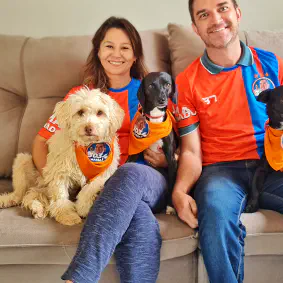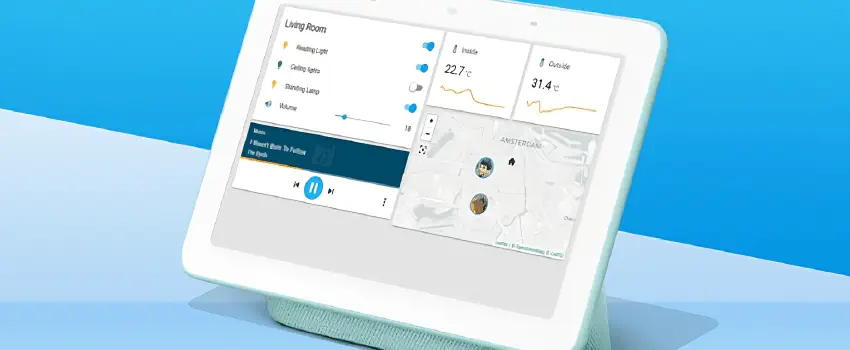
My Son Did His Last Magic Trick
It’s been a month since my youngest dog, Mago Merlin Harigaya Massa, my Little Mage, passed away. Even though he was “just” a dog, I loved him and treated him like a son. He slept with me and sat at the table during meals.
I’m trying to write for the tenth time while crying profusely. This text won’t be able to capture even part of how special he was.
Note: My dogs have an Instagram profile: https://www.instagram.com/avalondogs/
Origin
We met him on the street a month after buying my first house in Uberaba. He was still young and very dirty. He played with my two dogs, King Arthur and Princess Guinevere, while we walked around the block. I let the three sniff and enjoy each other’s company. Continuing our walk, he returned to the corner he was at. It was cute.
People from the neighborhood were looking after him, always providing food and water.
The next day was the same. My wife Ana Luisa and I were enchanted and began joking about “how long could we resist such cuteness?” That afternoon, it rained, and I felt so sorry for him that I went to check if he was okay. He was fine, taking shelter under a canopy until the rain passed.
On the third day, a Monday, after playing with my two dogs, he followed, and followed, and followed us calmly for the rest of the walk. He kept following us and when I opened the door to the house, he entered, sat down, and told me “We’re home, Dad”! Merlin was the one that adopted me, and I’m so eternally grateful.


Personality
We chose a name following the “tradition” of the tales of Avalon: Mage Merlin. Since he was the first dog we adopted after getting married, his full name became Mago Merlin Harigaya Massa. He was still young, the vet estimated he was about 4 months old, 6 tops. He had very short legs, so he was often teased as a “design flaw,” “little liar” (liars have short legs), or “rhino” (he ran and bumped into everyone).
I’ve met many dogs, but he was special. Much more intelligent and active than average. Almost like a border collie. A sponge for learning. He imitated his siblings in everything. In less than two months, he knew practically all the tricks it took me years to teach the others. He could shake hands, roll over, stand on his hind legs, spin, and many other tricks.
Food was his issue. He always ate desperately and was possessive over food and bones. If one of his siblings left food in their bowl, he would eat it and go straight to the “time-out” corner, cheeky guy (“I know, I know…”). We worked on this, and he improved a lot in his two years of life.
He had a cute habit of tilting his head to listen better to what we were saying. He was charming. Had an ear that, like his tail, clearly responded to his mood: it perked up when he was curious and dropped when he was tired or sad.
He loved to play. When he discovered the toy box, he was thrilled. He even played alone. He’d throw the balls far and go fetch them. Enjoyed tug-of-war toys like his sister, and also enjoyed playing ball like his brother. He was an energy machine. During walks, he ran non-stop, without getting tired. He happily accompanied me during my running workouts. I ran 5 km; he would run 10 because he kept going back and forth.
Family
King Arthur was initially uneasy about the arrival of another male and had some natural disputes. Arthur is more of a calm guy, and Merlin wants to play all day. When Arthur was in the mood, they would run together.
Guinevere adopted him as a half-brother, half-son. She would defend him during any event on the street, playfully wrestle with him, and even clean the sleep from his eyes. When he was on time-out, locked in the bathroom for a few minutes, she would stand at the door, alert and concerned. She still looks for him when we mention Merlin’s name. She deeply loved him.
He learned to be very affectionate by imitating his sister. He would sleep cuddled up in bed, sit next to us on the couch, ask for affection, and nudge us when we stopped. Family and friends were initially a little startled by his enthusiasm, but would fall in love with him within half an hour.
I took more photos of him than any other animal or person in these two years because he always had something incredibly funny or interesting.
The Day
It was a routine Monday walk, starting the week. We went to the park, I unleashed them, and let them run. Like any other day. On the way back, they usually walk without leashes because they’ve been trained to stay close. I reinforce this habit every day. Just counting “3, 2, 1…” is enough for them to pay attention and stay close.
But on that day, he saw another stray dog, became super excited to play, and ran to meet him. He tried to cross the street but didn’t see the car, which was actually going at a low speed. It all happened very quickly.
He left this world doing what he loved the most: playing, running, and making friends.
I am sure we gave him an excellent life. A country boy, he got to know the beach and the forest and traveled to a dozen cities. He ate, played, and slept a lot. He slept out of exhaustion from his always full day. Then woke up energized to start everything all over again. He had parents and siblings, love, and a home.
A month of mourning. Mourning like I’ve never felt before. I’ve had dogs in the past that eventually passed away. Even when I was younger, I did feel the sadness. But nothing compares to now. Mago Merlin was probably the biggest loss of my life. Perhaps because now I really felt like a father.
There wasn’t a single day that you didn’t make me smile. I love you, my son.
★ 2021-XX-XX (adopted 2021-12-13)
✝ 2023-08-14




























